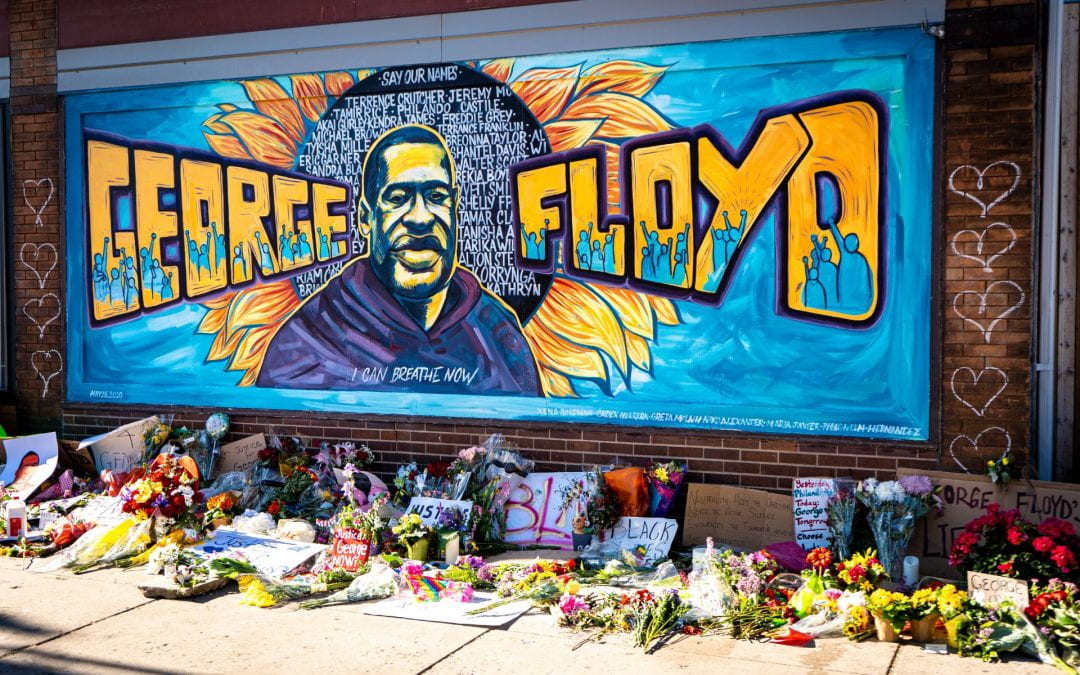By Jennifer Frost
Systemic white violence against black Americans is alive and well, and it’s white violence that sustains white supremacy.
Current scenes from the United States are both familiar and shocking. George Floyd’s life being brutally snuffed out by Minneapolis police, followed by peaceful protests of Floyd’s murder as well as legitimate rage met with more police brutality, then days of rioting, shattered windows, destroyed property, looting and fires.
The perpetrators of the rioting and looting are unclear, and white supremacists as well as protest bystanders have been reported as instigating these acts. But the perpetrators of the casual, merciless killing of Floyd are undeniable and very clearly seen on video: Derek Chauvin and three of his fellow officers.
Police murders of African Americans are tragically all too familiar, but Floyd’s horrible death still had the power to shock. All of the usual defences offered by the US police for the deaths at their hands are demonstrably false. Floyd was not fleeing. He was not armed. He was not threatening. He was not resisting arrest. In no way can the police justify their violence against him because they “feared for their lives”.
This murder laid bare once again the harsh reality and consequences of racism and white supremacy in the United States. African Americans and other racial and immigrant groups know this reality and feel these consequences every day, as did their predecessors in decades past. Yet, so many white Americans still don’t understand this contemporary or historical truth.
White violence sustained and sustains white supremacy. The systems of white supremacy in the United States might have changed over time, but all of them – slavery, segregation, mass incarceration – were maintained with physical force. Chains, whips, and rape under slavery, lynchings and chain gangs under segregation, police brutality under mass incarceration; all legal and crucial to each system of economic and racial exploitation.
Systemic white violence against African Americans has also been punctuated by moments of unleashed white terrorism by both civilians and police. What were called “race riots” in the late 19th and early 20th centuries, in cities like Atlanta, East St. Louis, and Chicago, are better called mass lynchings or ‘pogroms’ against black people. When Jack Johnson defeated Jim Jeffries, ‘The Great White Hope’, for the heavyweight boxing title in 1910, white Americans went on the attack against African Americans across the country.
Johnson’s victory posed a challenge to white supremacy, as did activists in the long freedom struggle. Their challenges to segregation and political disenfranchisement, even when just and supported by legal statute, the Constitution, and the Supreme Court, met with white resistance and further violence.
Many will recognise photos of police dogs and water hoses being turned on peaceful demonstrators in Birmingham, Alabama in 1963, or sheriff’s deputies and state troopers using electric cattle prods, billy clubs, and baseball bats against peaceful marchers in Selma, Alabama in 1965.
But away from the cameras were so many, many more acts of police and civilian violence. Bombings, arson, beatings, shootings, lynchings. Assassinations of famous national leaders, like Dr. Martin Luther King, Jr. shot down in Memphis, Tennessee in 1968, and less well-known regional leaders, like Reverend George W. Lee murdered in Belzoni, Mississippi in 1955, occurred with heart-breaking regularity.
And the perpetrators were rarely, if ever, brought to justice. Protections for civil and voting rights activists were only provided after white supremacists used their weapons. The price paid by participants in the freedom movement did result in the Civil Rights Act of 1964 and the Voting Rights Act of 1965 and, most importantly, mechanisms for their enforcement by the US federal government. Still, the price paid – in blood and lives – was high.
The average white American of the 1960s saw some but not all of the violence that was used to defend white supremacy in the South. Very few saw it in the North, specifically the brutality of the police in urban areas. The vast majority of the decade’s riots started with a violent or murderous act by the police. Similarly, the 1992 Los Angeles riots exploded after the acquittal of the police officers who viciously beat Rodney King.
And in 2020, the violence continues. The names and faces of recent victims of police violence appear in the media and are memorialised by the Black Lives Matter movement. Relatives, activists, and allies press for racial justice and for the end to the violence. When the BLM movement emerged during the presidency of Barack Obama, hope for change was possible.
And reforms did start to happen in some police departments, increasing transparency, accountability and limits on the use of force. The results can be seen in cities like Camden, New Jersey, and Flint, Michigan, where police officers joined with protestors as one community.
But with a president who refuses to acknowledge the source of this national outburst of rage, encourages police brutality, stirs up public anger with authoritarian threats and, in fact, receives praise from the leader of the police union in the very city where George Floyd was murdered, hope is hard to find.
This article was originally published on Newsroom and was republished with permission. For the original, click here.
Jennifer Frost is an Associate Professor in History at the University of Auckland. Frost is an expert on social, cultural, and political developments in the twentieth-century United States.
Disclaimer: The ideas expressed in this article reflect the author’s views and not necessarily the views of The Big Q.
You might also like:
What is the historical context behind the George Floyd protests? 🔊
Black Lives Matter, otherwise all lives do not matter ▶

